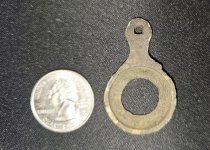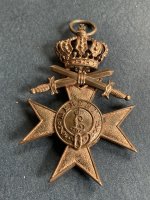leatherneck
Jr. Member
I have heard alot of people tell me they don't understand why Fisher discontinued the Gold Strike. They say it was ahead of the times in technology. I would like some feed back from anyone that has one or use to have one. It sounds like it might be a machine worth looking for.


 DUDE VIETNAM VET here I was just outside using my Gold$trike about 25 minutes ago the explanations to your question did not answer you inquiry , the Gold$trike was meant to replace the Gold Bug II it runs at 30K and hits gold like a ton of bricks , it does sound weird it has a two tone system hi low sound and no pin point ,, but works better than the Bug II because it can find hot rocks with the tone system , I tested this unit against the Minetrash Eureka Gold and the Gold$trike would hit very small placer gold targets the Eureka would not respond to , I no longer have a Eureka Gold never liked the machine but I still have the Gold$trike with two coils it does a very good job of finding gold , I payed around $450 for mine used I bet you can get one for less now , the problem is the system used to report the gold find it is a two tone low high for metal and a low tone for hot rocks almost no one liked this system they did not sell very many , I don't like the sound that much but it does really work well ...
DUDE VIETNAM VET here I was just outside using my Gold$trike about 25 minutes ago the explanations to your question did not answer you inquiry , the Gold$trike was meant to replace the Gold Bug II it runs at 30K and hits gold like a ton of bricks , it does sound weird it has a two tone system hi low sound and no pin point ,, but works better than the Bug II because it can find hot rocks with the tone system , I tested this unit against the Minetrash Eureka Gold and the Gold$trike would hit very small placer gold targets the Eureka would not respond to , I no longer have a Eureka Gold never liked the machine but I still have the Gold$trike with two coils it does a very good job of finding gold , I payed around $450 for mine used I bet you can get one for less now , the problem is the system used to report the gold find it is a two tone low high for metal and a low tone for hot rocks almost no one liked this system they did not sell very many , I don't like the sound that much but it does really work well ...

